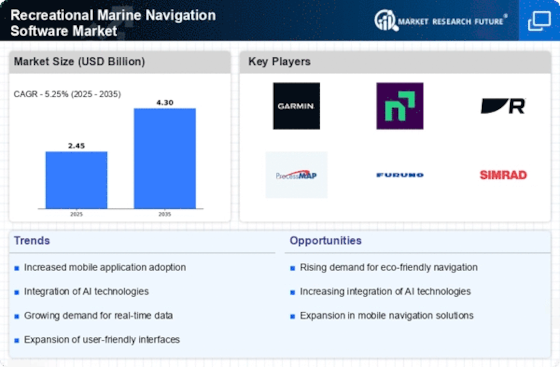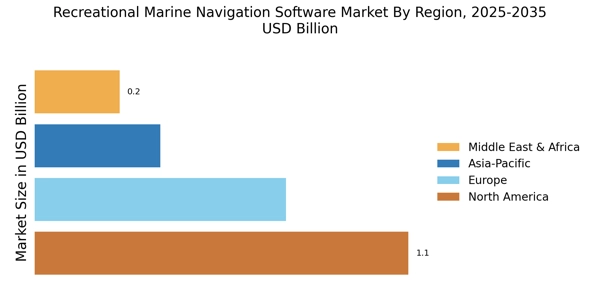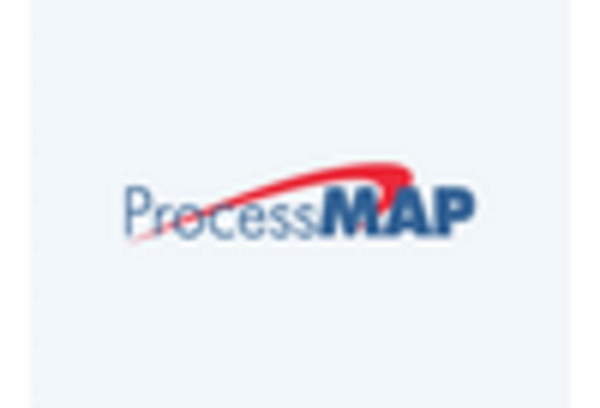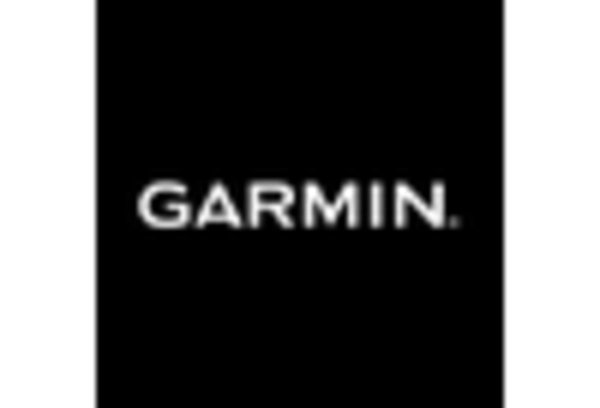Expansion of Marine Tourism
The expansion of marine tourism is a notable driver for the Recreational Marine Navigation Software Market. As tourism in coastal and marine areas grows, the demand for navigation solutions tailored to tourists increases. Tourists often require user-friendly navigation software that can guide them through unfamiliar waters, enhancing their overall experience. Data indicates that regions with thriving marine tourism sectors have seen a rise in the adoption of navigation tools. This trend suggests that the Recreational Marine Navigation Software Market will continue to grow, as software developers focus on creating solutions that cater to the needs of both seasoned boaters and newcomers exploring marine environments.
Growing Environmental Awareness
The growing environmental awareness among recreational boaters is emerging as a significant driver for the Recreational Marine Navigation Software Market. As more individuals recognize the impact of boating on marine ecosystems, there is a shift towards eco-friendly navigation solutions. Software that provides information on protected areas, marine life, and environmentally sensitive zones is becoming increasingly popular. Market trends indicate that consumers are willing to invest in navigation tools that promote sustainable boating practices. This shift towards environmentally conscious choices is likely to foster innovation within the Recreational Marine Navigation Software Market, as developers create solutions that align with the values of eco-aware boaters.
Increased Focus on Safety Regulations
The heightened focus on safety regulations within the boating industry significantly influences the Recreational Marine Navigation Software Market. Regulatory bodies are increasingly mandating the use of navigation aids to ensure the safety of recreational boaters. This trend has led to a surge in demand for navigation software that complies with safety standards. Data suggests that regions with stringent safety regulations have seen a corresponding increase in the adoption of navigation solutions. As boaters become more aware of safety requirements, the Recreational Marine Navigation Software Market is expected to expand, as users seek software that not only enhances navigation but also adheres to regulatory guidelines.
Rising Popularity of Recreational Boating
The increasing popularity of recreational boating is a primary driver for the Recreational Marine Navigation Software Market. As more individuals engage in boating activities, the demand for effective navigation solutions rises. According to recent data, the number of registered recreational boats has seen a steady increase, suggesting a growing interest in water-based leisure activities. This trend is likely to propel the adoption of navigation software, as boaters seek reliable tools to enhance their experiences on the water. Furthermore, the expansion of boating communities and clubs contributes to this growth, as they often promote the use of advanced navigation technologies. Consequently, the Recreational Marine Navigation Software Market is poised to benefit from this surge in recreational boating participation.
Technological Advancements in Navigation Systems
Technological advancements play a crucial role in shaping the Recreational Marine Navigation Software Market. Innovations such as GPS, AIS, and integrated chart plotting systems have transformed how boaters navigate waterways. The integration of these technologies into navigation software enhances accuracy and user experience, making it more appealing to recreational boaters. Market data indicates that the demand for sophisticated navigation tools has increased, with many users seeking features like real-time weather updates and route optimization. As technology continues to evolve, the Recreational Marine Navigation Software Market is likely to witness further growth, driven by the need for more efficient and user-friendly navigation solutions.


















Leave a Comment